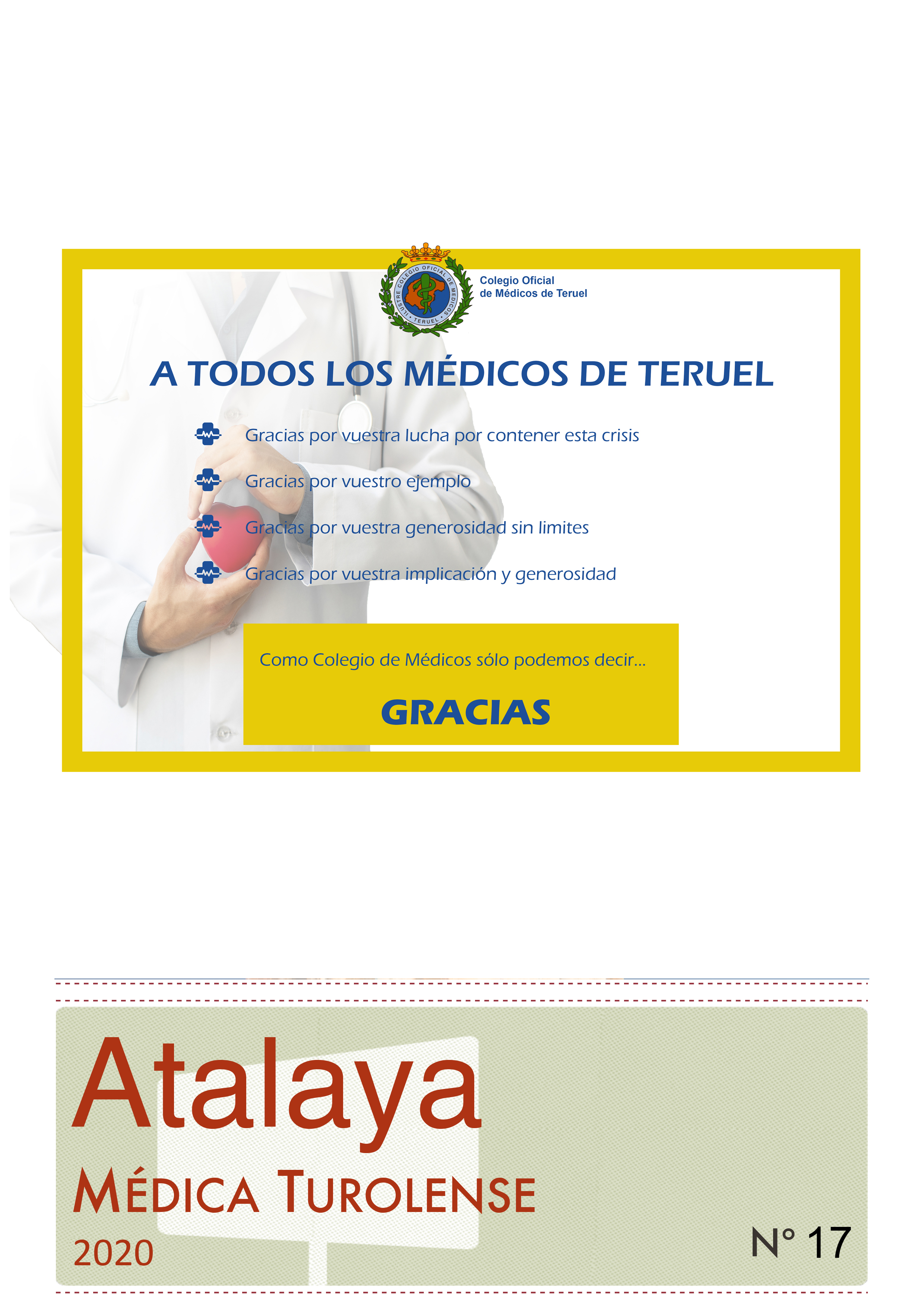CARACTERÍSTICAS CLÍNICAS Y TERAPÉUTICAS DE LASEXACERBACIONES EN ASMA GRAVE
Palabras clave:
original, asma, estadísticas y datos numéricos, prevención y control, tratamiento farmacológicoResumen
El asma es una enfermedad de etiología diversa y prevalencia cada vez mayor que supone un importante coste sanitario y social y que resta calidad y años de vida a quienes lo padecen. El control de la enfermedad permite reducir sus exacerbaciones y en última instancia sus consecuencias, pero implica una interacción cercana médico-paciente y una utilización óptima de los tratamientos disponibles. Con este estudio pretendemos describir las características de las exacerbaciones del paciente diagnosticado de asma grave, su número, su gravedad y su concordancia con el tratamiento pautado.
Referencias
1. Guía Española para el Manejo del Asma. GEMA 4.4 [ Internet]. Disponible en: http://www.gemasma.com/
2. The Global Asthma Report 2014 [Internet]. Disponible en: http:// www.-globalasthmareport.org/burden/burden.php
3. The economic burden of lung disease –ERS [Internet]. Disponible en: http// www.erswhitebook.org/chapters/the-economic-burden-of-lung-disease/
4. James F. Donohue, Neal Jain. Exhaled nitric oxide to predict corticosteroid responsiveness and reduce asthma exacerbation rates. Respiratory Medicine (2013) 107, 943-952.
5. Reddel HK, Taylor DR, Bateman ED, Boulet L-P et al. On behalf of the American Thoracic Society /European Respiratory Society Task Force on Asthma Control and Exacerbations. An official American Thoracic Society / European Respiratoy Society Statement: Asthma Controland Exacerbations.Standardizing Endpoints for Clinical Asthma Trials and Clinical Practice. Am J Respir Crit Care Med 2009; 180:59-99.
6. Plaza V, Serrano J, Picado C, Sanchis J. High Risk Asthma Research Group . Frequency and clinical characteristics of rapid-onset fatal and near-fatal asthma. Eur Respir J. 2002; 19: 846-52.
7. Woodruff PG, Emond SD, Singh AK, Camargo CA Jr. Sudden-onset severe acute asthma: clinical features and response to therapy . Acad Emerg Med. 1998; 5: 695-701.
8. Turner MO, Noertjojo K, Vedal S et al. Risk factors for near-fatal asthma: a case-control study in hospitalized patients with asthma. Am J Respir Crit Care Med. 1998;157: 1804-9
9. Serrano J, Plaza V, Sureda B, de Pablo J, Picado C, Bardagi S et al. Alexithymia: a relevant psychological variable in near-fatal asthma. Eur Respir J. 2006 ; 28: 296-302.
10. Zeiger RS et al. High blood eosinophil count is a risk factor for future asthma exacerbations in adult persistent asthma.J. Allegy Clin Immunol Pract. 2014.
11. Ortega H, Yancey SW et al. Asthma exacerbations associated with lung function declive in patients with severe eosinophilic asthma. J Allergy Clin Immunol Pract. 2018 May-Jun; 6 (3):980-986.
12. Rodrigo G, Plaza V, Bardagí S, Castro-Rodríguez JA, de Diego A, Liñan S, et al. Guía ALERTA 2. América Latina y España: recomendaciones para la prevención y el tratamiento de la exacerbación asmática. Arch Bronconeumol. 2010; 46(Suppl 7): 2-20)
13. Haldar P, Brightling CE et al. Mepolizumab and exacerbations of refractory eosinophilic asthma. N. Engl J Med 2009; 360:973-84.
14. Pavord ID, Korn S et al. Mepolizumab for severe eosinophilic asthma (DREAM): a multicentre, doublé-blind, placebo controlled trial. Lancet 2012;380:651-9.
15. Moore WC, Meyers DA, Wenzel el al. Identification of asthma phenotypes using clustering analysis in thesevere Asthma Research Program. Am J RespirCrit Care Med.2010; 181: 315-23.


